How to avoid nuclear catastrophe—and a costly new arms race
By Daryl G. Kimball | March 11, 2022
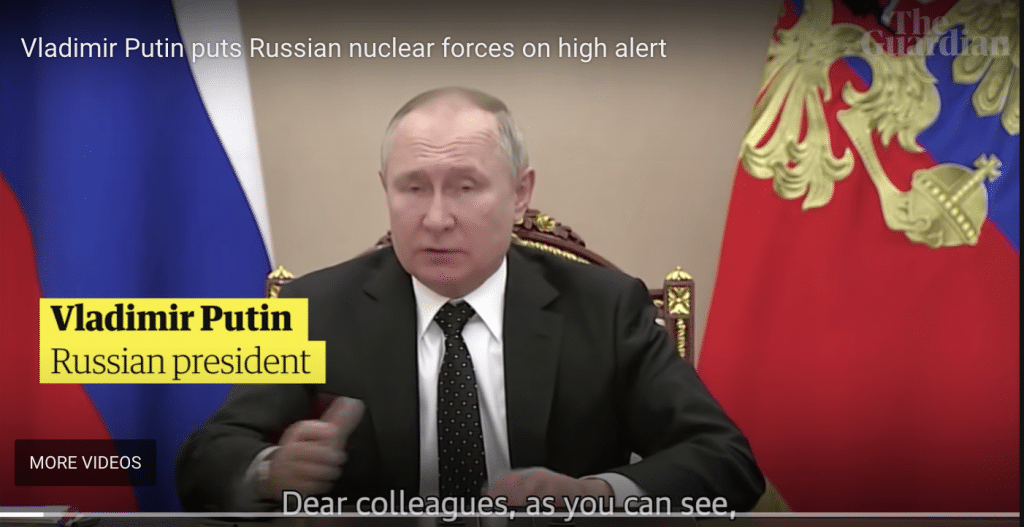
If Russian President Vladimir Putin’s premeditated, illegal attack on Ukrainian cities, towns, nuclear power stations, hospitals, and civilians wasn’t shocking enough, his recent nuclear saber-rattling is a crude reminder that the risk of nuclear war still looms. To respond effectively, those looking for a safer, saner world must rethink the nuclear deterrence policies and practices that have led the nuclear weapons countries to this point and push them toward new approaches and policies that move the world away from nuclear catastrophe.
“Western countries aren’t only taking unfriendly economic actions against our country, but leaders of major NATO countries are making aggressive statements about our country,” Putin said in a February 27 in a meeting with Russian defense officials. “So, I order to move Russia’s deterrence forces to a special regime of combat duty.”
According to a senior Russian official I have spoken with in recent days, Putin’s statement was probably designed to reinforce his earlier implied threats of nuclear use—threats clearly meant to ward off outside military interference in his attack on Ukraine. Nuclear threats and alerts were not uncommon during the Cold War, before the 1962 Cuban missile crisis and after. But Putin’s overt nuclear saber-rattling is unprecedented—and unacceptable—in the post-Cold War era. Since the Soviet Union dissolved, no US or Russian leader has raised the alert level of nuclear forces to try to coerce the other side’s behavior.
Such actions are dangerous for all sides. Nuclear threat rhetoric and orders to raise the operational readiness of Russian or US nuclear forces could be also misinterpreted in ways that lead to other side to make nuclear countermoves that lead to a dangerous escalation of tensions and fears of attack.
The idea that nuclear weapons can be “used” provide cover for a major conventional military intervention against a nonnuclear weapon state is, unfortunately, not a new one nor uniquely Russian. Adm. Charles Richard, head of US Strategic Command, said in February 2021 that “[w]e must acknowledge the foundational nature of our nation’s strategic nuclear forces, as they create the ‘maneuver space’ for us to project conventional military power strategically.”
In this case, Putin’s nuclear brinksmanship, while unnerving and dangerous, has not stopped NATO members from providing defensive weapons to Ukraine and deploying sweeping sanctions against Russia’s leadership, oligarchs, and financial and economic systems.
Putin’s invasion also underscores a reality: Contrary to myth, nuclear weapons don’t prevent major wars. Rather, they can facilitate aggression by nuclear-armed states and make wars waged by nuclear-armed states far more dangerous—especially when nuclear-armed states become pitted against one another, dangerously increasing the risk of miscalculation and miscommunication.
President Joe Biden has wisely not engaged in inflammatory nuclear rhetoric or raised the alert status of US nuclear forces. The Pentagon even postponed a scheduled Minuteman III intercontinental ballistic missile test flight to avoid the possibility that Putin might use it as a pretext for further nuclear escalation.
So long as NATO and Russian forces don’t begin fighting each other, the risk of nuclear escalation may be kept in check. But a close encounter between NATO and Russian warplanes (which would result if NATO imposed a “no fly zone” over Ukraine’s airspace) could become a flashpoint that leads to a direct and wider conflict.
Unlike the more severe and acute risk of nuclear war between the United States and the Soviet Union during the 13 day-long Cuban missile crisis of October 1962, Russia’s brutal war in Ukraine will likely lasts many weeks, if not months or more. In other words, the world will remain in a condition of heightened nuclear danger for some time. The situation demands restraint and a diplomatic solution. But once warfare in Ukraine has stopped, there must be a serious reckoning with the role nuclear weapons play in the military strategies of nuclear countries around the world, and renewed pressure for action toward their elimination.
Needed: changes in military doctrine. Today, US and Russian military strategies reserve the option to use nuclear weapons first in extreme circumstances and even sometimes against nonnuclear threats. Russia’s formal nuclear doctrine describes two main scenarios that might trigger the use of nuclear weapons: in response to an attack with weapons of mass destruction, or in the face of a conventional war that threatens the “very existence of the state.”
The viability of the Russian state is clearly not under imminent threat from either Ukraine or from NATO. But if the Kremlin thought an attack from the United States or NATO was under way, Putin might well consider going nuclear, perhaps beginning with the use of short-range, “tactical” nuclear weapons, to try to tip the balance in Russia’s military favor or to try to end the conflict.
But the notion that a nuclear war can be “limited” is dangerous. In practice and in the fog of war, once nuclear weapons are used in a conflict involving nuclear-armed adversaries, there is no guarantee it would not quickly become an all-out nuclear conflagration.
As the head of US Strategic Command General John Hyten said in 2018 after the annual Global Thunder wargame: “It ends bad. And the bad meaning it ends with global nuclear war.”
To illustrate the dangers, in 2020 researchers at Princeton’s Program on Science and Global Security published an analysis of what might happen if Russian or NATO leaders chose to use nuclear weapons first in a conflict in Europe. After an initial volley of “tactical” nuclear detonations, it could escalate and involve a massive exchange of thermonuclear weapons involving Russia’s arsenal of some 1,450 strategic warheads and the U.S. arsenal of 1,350 strategic warheads on its missiles and bombers.
In that scenario, more than 91 million people were projected to die in just the first few hours of the conflict. In the days, weeks, and years that follow, millions more would die from exposure to radiation. Health, financial, and economic systems would collapse around the globe.
We can ill afford to live with nuclear weapons policies that could lead to such catastrophic outcomes. New approaches are essential.
New approaches to the nuclear threat. In 2017, more than 120 nonnuclear weapon states negotiated the Treaty on the Prohibition of Nuclear Weapons. Although that treaty has to date been dismissed by nuclear-armed countries because it challenges their nuclear deterrence doctrines, it bolsters the global taboo against nuclear weapons and builds-up the legal framework for their eventual elimination.
Many American politicians, mainly Republicans but also some Democrats, however, want to double down on insanity by funding even more nuclear firepower. Former Secretary of State Mike Pompeo has argued that “advanced weapons must be pursued if they are necessary to match potential belligerents” like Russia. These include new types of lower-yield nuclear weapons to provide a president with “more credible” nuclear use options and, if necessary, use in a future conflict in the Baltic region, or some other dispute with Russia, or perhaps China. But there are no winners in such a costly new arms race, and certainly no winners in a nuclear war.
Instead of reverting to extremely risky and absurd Cold War-era nuclear behaviors, US leaders need to embrace new thinking that begins to move us out from under the shadow of nuclear catastrophe, beginning with the Biden administration’s nearly completed Nuclear Posture Review.
To start, Biden should draw a strong distinction between Putin’s irresponsible nuclear threats and US behavior and clarify that the sole purpose of the U.S. nuclear weapons arsenal deter the first use of nuclear weapons by others as he pledged to do in 2020. A “sole purpose” policy would rule out the use of nuclear weapons in a preemptive strike or in response to a non-nuclear attack on the United States or its allies, increase stability, reduce Russia’s perception of the threat from NATO, and decrease the overall risk of nuclear war.
Even after the eventual end of Putin’s war on Ukraine, the risk of further NATO-Russia conflict will persist. The United States and Russia (with or without Putin), along with France, and the United Kingdom, will still possess deadly nuclear arsenals poised to retaliate within minutes in response to nuclear attack or a false warning. In the wake of the conflict in Ukraine, we can expect that many in the security establishments of the United States, Europe, and Russia will argue for new nuclear weapons capabilities to counter each other, and perhaps for the first time in decades, an increase in the number of US and Russian deployed nuclear weapons.
The more prudent path is to freeze the qualitative arms race, further reduce the role of nuclear weapons, and reverse the race through renewed US and Russian action on nuclear arms control and disarmament—and eventually to involve the other major nuclear-armed states, particularly China, in the nuclear arms control and disarmament enterprise.
To reduce tensions in Europe, Russia and NATO member states will need to avoid the temptation to introduce new offensive strike weapons, particularly nuclear weapons. For example, the offer from Russia’s client state, Belarus, to host Russian nuclear weapons, if pursued by Putin, would further undermine Russian and European security, and increase the risk of nuclear war. It would also be highly destabilizing if NATO and/or Russia reintroduce once-banned intermediate-range missiles, which can reach their targets in minutes and with little warning.
Still more can and must be done reduce nuclear risks. With an enormous number of their nuclear forces deployed on invulnerable strategic submarines, neither Washington nor Moscow needs to keep their land-based missiles ready for launch within minutes of a warning of attack, as current plans require. Both countries could reduce the day-to-day high alert status of their land-based intercontinental missiles and they would still be capable of launching a devastating retaliatory nuclear attack.
The need for continued arms control and disarmament negotiations. Although Putin’s regime must suffer international isolation now, Russia and the West have a strong interest (and an obligation under the 1968 Treaty on the Nonproliferation of Nuclear Weapons) to resume negotiations on verifiable agreements that significantly cut the still bloated strategic nuclear stockpiles on both sides.
Despite reckless behavior on the part of Russia, as well as China’s effort to fortify its nuclear arsenal array, the size of the US nuclear arsenal still exceeds what is necessary to maintain an effective deterrent.
President Obama announced in 2013 that the United States could safely reduce its deployed strategic nuclear weapons by up to one-third below the current New START levels. The analysis concluded the United States could independently reduce its deployed arsenal to this level and still hold adversary targets at risk so as to deter nuclear attack. But the Obama administration made a political decision to pursue such reductions bilaterally with Russia. The rationale for a smaller force still holds.
An up-to-one-third reduction in deployed strategic forces would leave the United States (and Russia) with nuclear capability with which to trade as part of new arms control arrangements with Russia (or in the future China).
Any increase in the number of US or Russian strategic nuclear weapons above New START levels, or any increase in nonstrategic weapons arsenals, would not enhance deterrence against one another. Rather it would lead to a dangerous action-reaction that increases tensions and the risk of miscalculation and catastrophe.
US efforts to further limit Russian strategic nuclear weapons and bring China into the arms control process are unlikely to gain traction unless Washington agrees to seriously discuss constraints on its long-range missile defense capabilities. Fielding sufficient numbers of U.S. missile interceptors to mitigate the threat of a limited ballistic attack from North Korea or Iran and agreeing to binding limits on the quantity, location, and capability of missile defense systems should not be mutually exclusive.
Whenever the US-Russian arms control dialogue resumes again, the two countries will also need to explore options to prevent a new intermediate-range missile race and to regulate and reduce existing stockpiles of shorter-range “battlefield” nuclear arsenals, including Russia’s stockpile of approximately 1,000 weapons that are kept at centralized storage sites and the 160 US nuclear gravity bombs stationed at five NATO bases in Europe. Before Russia’s war on Ukraine, both sides indicated they want to prevent the redeployment of intermediate-range, ground-launched missiles that could threaten Europe and Russia.
The last remaining nuclear arms control agreement regulating the world’s two largest arsenals, New START, expires early in 2026. In the absence of commonsense nuclear arms control guardrails, the risk of costly, unconstrained global nuclear arms race will grow.
Putin’s recent nuclear threats highlight the existential dangers posed by nuclear weapons. Ultimately, the only way to eliminate those dangers is to verifiably eliminate all nuclear weapons. Even if that goal is a long way off, moving steadily in that direction, while preserving the taboo against nuclear weapons use, is essential to our survival.
Together, we make the world safer.
The Bulletin elevates expert voices above the noise. But as an independent nonprofit organization, our operations depend on the support of readers like you. Help us continue to deliver quality journalism that holds leaders accountable. Your support of our work at any level is important. In return, we promise our coverage will be understandable, influential, vigilant, solution-oriented, and fair-minded. Together we can make a difference.
Keywords: Russia, Ukraine, arms control, disarmament, invasion, nuclear threats
Topics: Analysis, Nuclear Weapons
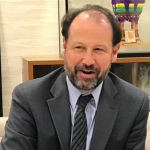



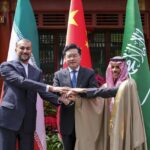

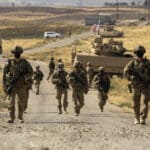
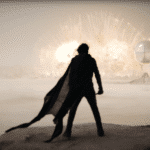


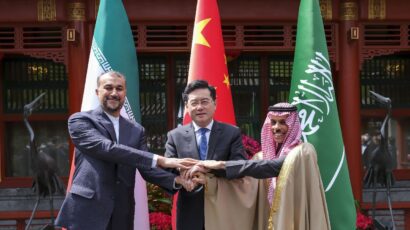





Thanks for a great lay of the land. I am reminded of a line from a 1963 essay by Dr King when he said our choice was “either nonviolence or nonexistence.” One question I would have was in relation to this paragraph: “In that scenario, more than 91 million people were projected to die in just the first few hours of the conflict. In the days, weeks, and years that follow, millions more would die from exposure to radiation. Health, financial, and economic systems would collapse around the globe.” Is this not a serious lowballing of the effects of 2800… Read more »
What a great article!! I will go as far as to say this is this one of the best articles that I have read on “The Bulletin”. I just hope disarmament is possible before it is too late. I have been in fear ever since the Cuban Missile Crisis and have always been suspicious about the rationality of world leaders to create a system where mass extinction is just a push of a button from becoming reality. The includes our leaders as well.
Well said, Daryl.